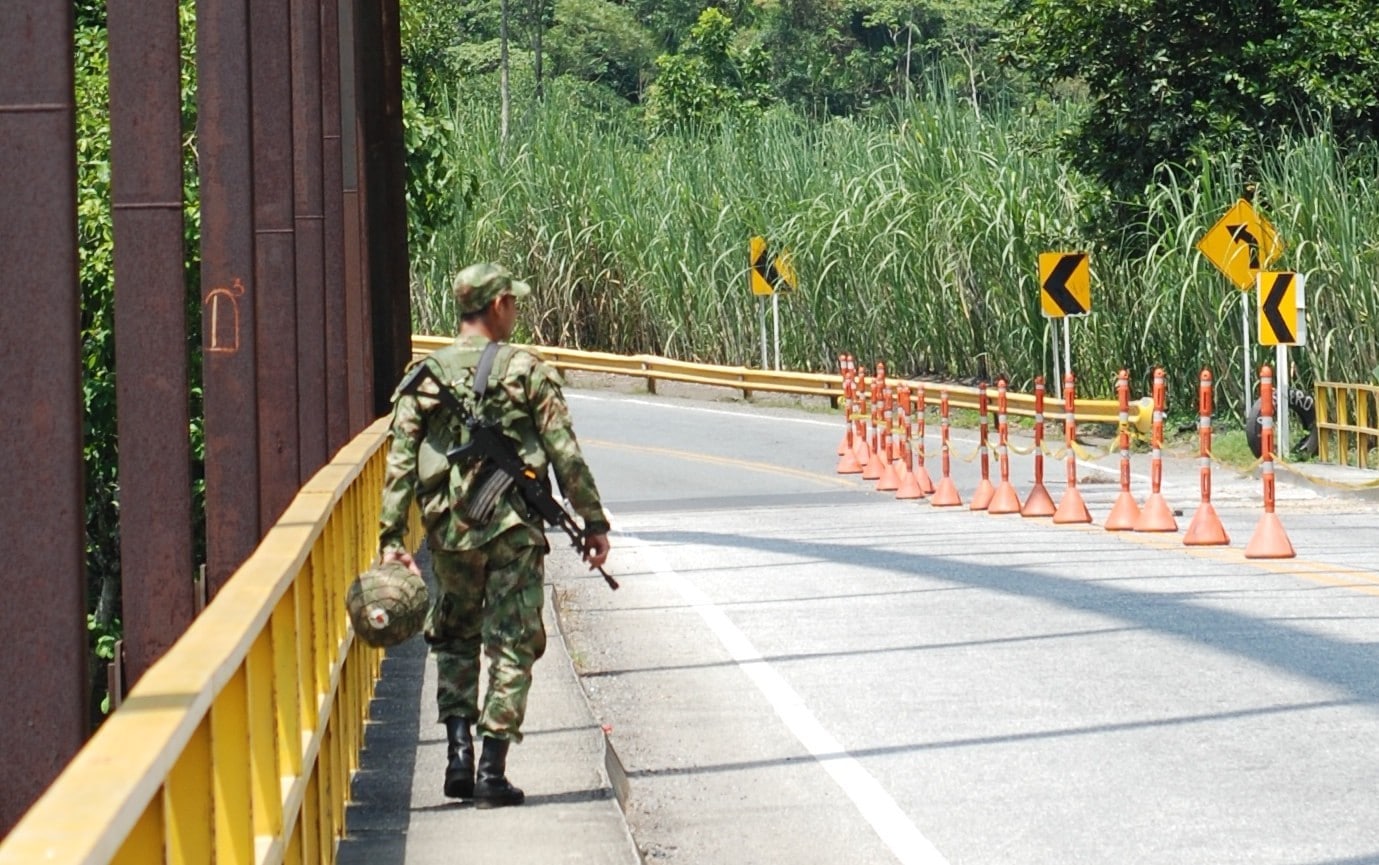Diplomatic officials announced May 27 that the US is sending an armed forces unit to Colombia. From June, the Security Force Assistance Brigade (SFAB) begins a four-month operation, training Colombian military forces in fighting that country’s drug war.
The SFAB will be deployed in five regions that the Colombian government classifies as “Future Zones.” The government has little control over these areas, which instead have been historically controlled by the rebel group Revolutionary Armed Forces of Colombia (FARC). Four of the five regions produce high amounts of the coca crop and cocaine.
So why is this happening now? Part of the reason it’s possible is an historic peace deal between the Colombian government and FARC, signed in November 2016. The deal’s provisions commit the government to reducing the illicit drug trade, including by paying direct subsidies to coca farmers who can transition to other crops.
But the US is also pressuring Colombia, its strategic and diplomatic ally, to ramp up its drug war. The Trump administration has even urged Colombian President Iván Duque Márquez to relaunch a program using planes to spray the herbicide glyphosate over coca fields, regardless of the chemical’s potential harms to humans, animals and the environment.
The two countries set a joint goal of halving the production of coca and cocaine by 2023. President Duque has said he wants to destroy 130,000 hectares of coca crop in 2020—a 30 percent increase from last year.
Admiral Craig Faller, commander-in-chief of the US Southern Command, called the SFAB mission “an opportunity to show our mutual commitment to countering drug trafficking and supporting regional peace, respect for sovereignty, and the enduring promise of defending shared ideals and values.”
Colombian military officials quotes in the same release also referenced the two governments’ shared desire to stamp out drug trafficking, saying, “this scourge is one of the main motors of the violence that affects communities, social leaders. Drug trafficking kills our farmers, destroys forests and wildlife and contaminates Colombia’s rivers and seas.”
The SFAB mission is just one element of the US armed forces’ “enhanced counter-narcotics operations,” ramping up deployments and resources for the US Southern Command, which US President Donald Trump announced in April.
His announcement came at a press briefing where he claimed his administration’s focus was “to wage all-out war to defeat the [corona]virus”, and boasted about how effectively and quickly he and his team had acted to stop it. Yet helping millions of sick or unemployed Americans took a back seat that day to the issue of coca plants in the Andean jungle.
Despite years of counter-narcotics operations in Colombia, coca and cocaine production have increased significantly in the past decade. In 2017, coca production by acre was higher than ever recorded, according to the UN Office of Drugs and Crime (UNODC). And the number of families making a living off the crop has nearly doubled since 2013, to nearly 120,000. Coca cultivation increased slightly in 2019, up 4,000 hectares from the year prior. Production of cocaine increased by 72 tonnes in the same year.
The UNODC also found that the street price of cocaine in the US has steadily declined over the past few decades, despite increased crop eradication and enforcement in Colombia, and continuing prohibition and enforcement in the US.
Of course, cocaine is involved in many harms. But its prohibition makes it more dangerous, not less. US street supplies of cocaine, and other stimulants like methamphetamine, are increasingly adulterated with synthetic opioids like fentanyl, placing people at much greater risk. The ensuing harms are a direct result of the lack of a regulated supply of cocaine, as drug policy experts point out.
The US has spent $10 billion over 15 years just to fight the cocaine trade in Colombia. We can judge the results for ourselves—comparing them, for example, to outcomes in countries that have decriminalized drugs.
What would happen if we instead dedicated those resources to improving the lives of people using drugs? How far would $10 billion go to provide free sterile syringes and HIV/AIDS testing, primary and mental healthcare, housing support, and education and job training to people in need?
Image by Celine Massa via Flickr/Creative Commons 2.0.





Show Comments